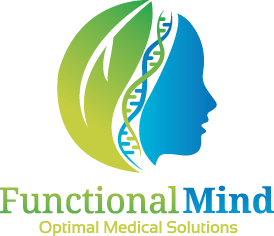A lightbulb moment
When I began shadowing Ed Levitan MD in 2012 at Visions Healthcare, two things happened: first, a whole world of knowledge of patient care opened up to me. Second, this very same world significantly improved my son’s health, something that had been a struggle for a couple years. Little did I know that this knowledge would significantly impact my own health, which in turn allowed me to have the ability to help others.
It was a light bulb moment but on a lighthouse scale. My work at Visions Healthcare and training at the Institute of Functional Medicine provided me more tools to assess, diagnose and treat patients with chronic medical and psychiatric problems. It’s difficult to explain sometimes the depth and breadth of what we do as clinicians in this field.
In conventional medicine, the common treatment for most conditions is using medications. Sometimes it works; and when it works, our job is done. However, when it doesn’t work, what happens? Well, in psychiatry, it’s “let’s try another medication” until one works. At least we pray one does. Part of our armamentarium for treatment is the equivalent of trying new lightbulbs in a lamp hoping one would shed light.
As you can imagine, if one were trying to get a lamp to turn on, by the second or definitely the third bulb, one would conclude there was something wrong with the lamp, not that one should keep trying lightbulbs. When it comes to people, it seems that we just keep trying different medications without drawing a different conclusion.
In seeking alternative causes, one might look to see if the lamp were plugged in, and if it is, to see if the light switch on the wall is in the correct position, and if it is, to see if other areas of the house are working electrically. If not, then perhaps one might look outside the window to see if the neighbors lights are on. If their lights are indeed out as well, one would stop changing lightbulbs. In fact, every step of the way of elucidating the cause of the broken lamp subsequently has a different solution.
There is a different remedy if the switch was broken, if the wiring of the lamp was corroded, if the plug into the wall was bent, if the circuit breaker was flipped, if the town’s power grid was damaged, etc.. Every step of the way, the severity of the damage correlates with the time it takes to acquire the materials and the manpower to repair it. Remedies also depend on the age of the lamp, age of the house and environment in which the house stands.
Functional medicine has the same commonsensical approach. Get to the root cause of the problem and search for the most appropriate way to fix it. Sometimes it requires looking at all of the possibilities, not just focusing on one cause. Most problems we encounter are a combination of causes.
Technically, most doctors do a medical workup to rule out the medical causes of psychiatric systems. However this approach is often a superficial search for major causes, and that usually means just employing a different medication. Medication management is something like selling you a series of different light bulbs in the expectation that one might work. It is sometimes simplistically described as “matching the ill to the pill.”
What does one do when the lamp doesn’t function in all of the scenarios given? The key to fixing the problem with the inoperable lamp is figuring out what’s gone wrong first. Then decide what to do by addressing multiple areas that impact its function, including doing nothing at all and just getting a new lamp. Sometimes, three or four things need to be remedied before there is light.
When it comes to us, we can’t replace our body, at least in the foreseeable future! Fortunately, unlike the lamp, the human body has the potential to heal itself given the right nutrients, supports, and environment. Chronic health problems persist for most people despite taking 10-20 pills. Clearly, for many people, that is not the proper approach.
Sally and I take the time to get to the bottom of the problem often finding it is two to four issues. We want to know the details: when did it start, how did it evolve, what made it worse, what else was going on, what made it better, etc. We do an extensive evaluation and are determined to find the cause. We will draw up a plan to regain balance – body, mind and soul – of your life, to feel vital again and to live with peace of mind. In the end, you will likely be on significantly less medication. It generally takes 6 months to 2 years of working with us depending on the circumstances. We are passionate about what we do and want you to shine. We have helped many people flourish. That is our motivation for collaborating and starting this practice: Functional Mind.
Achina
